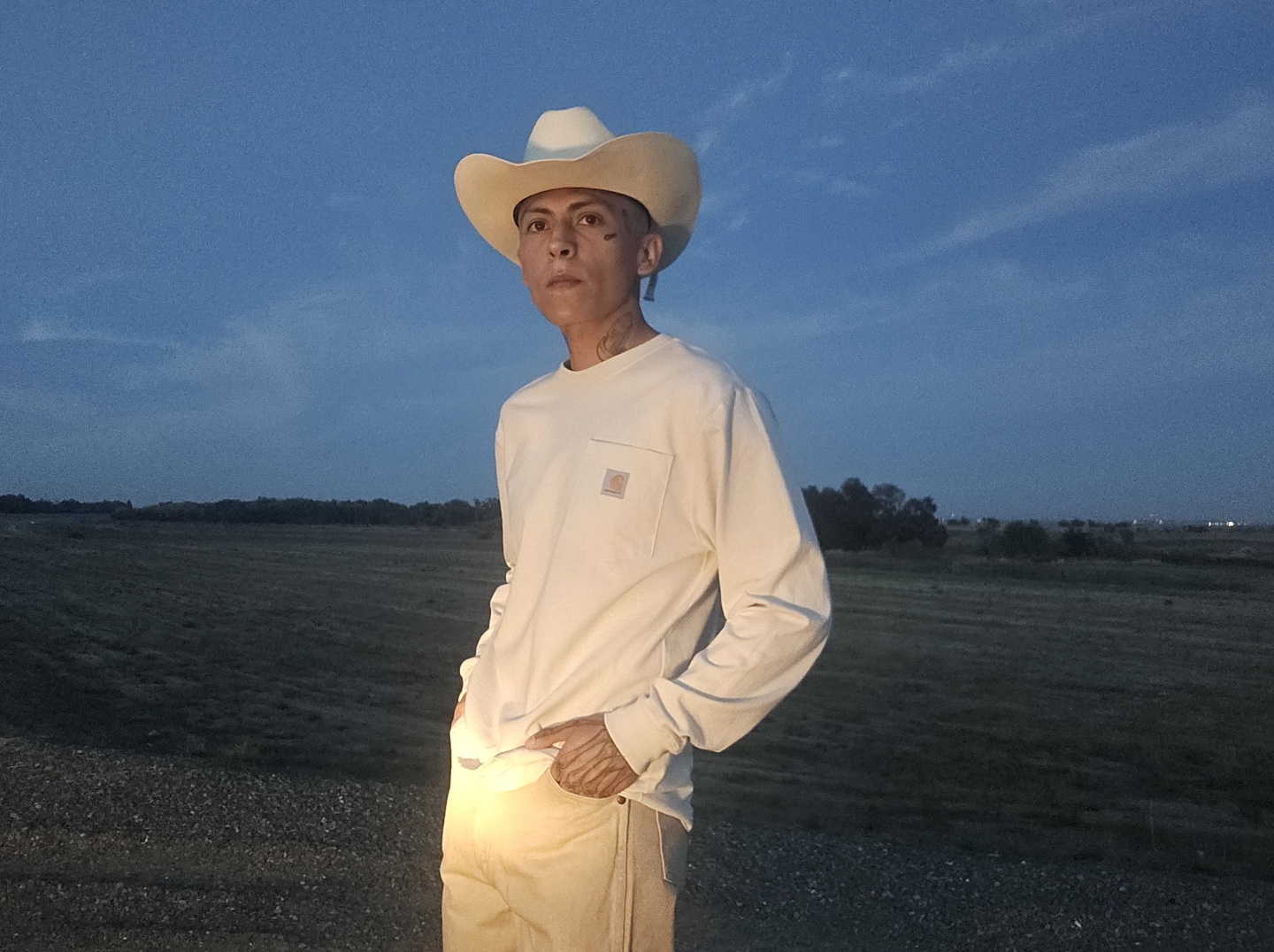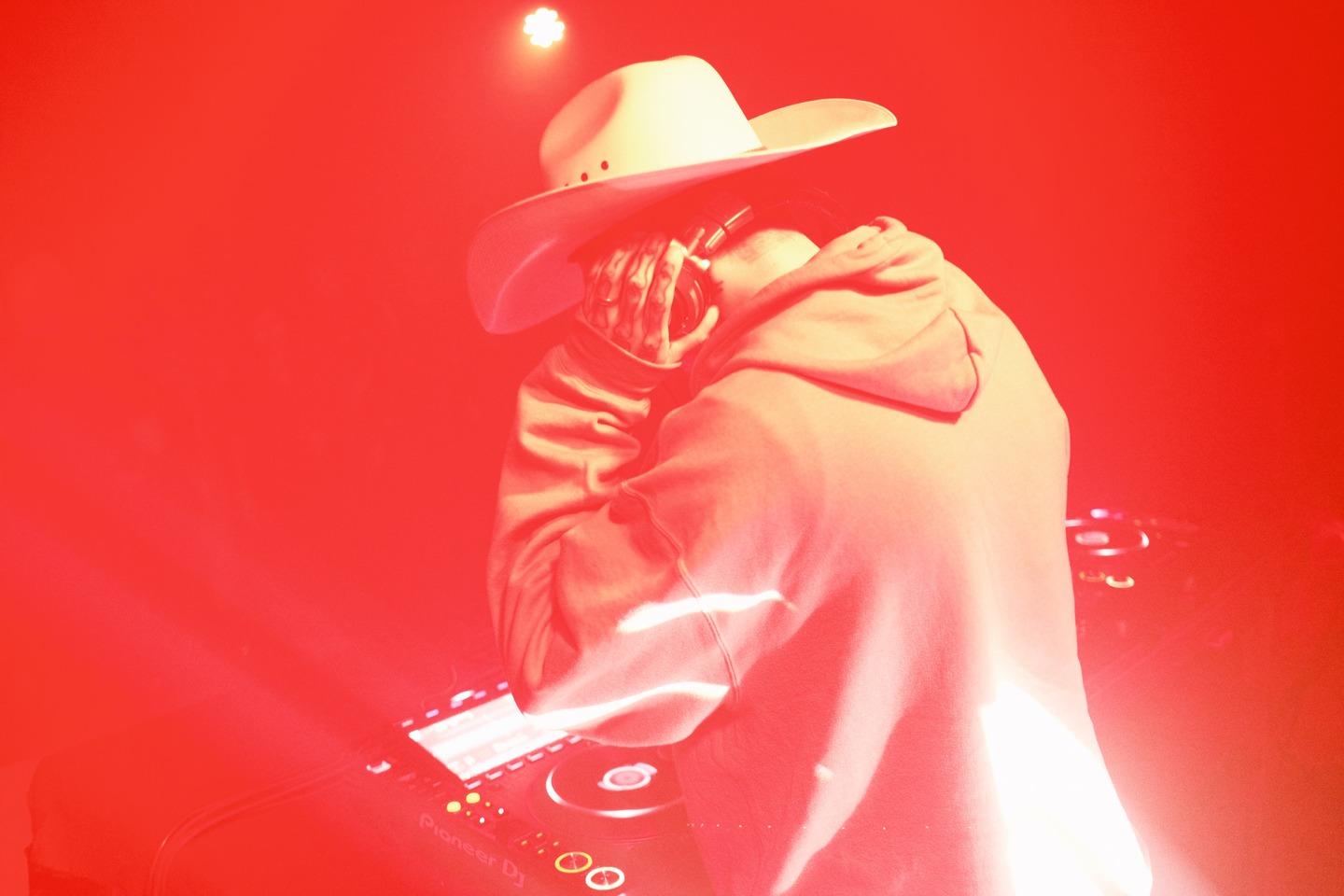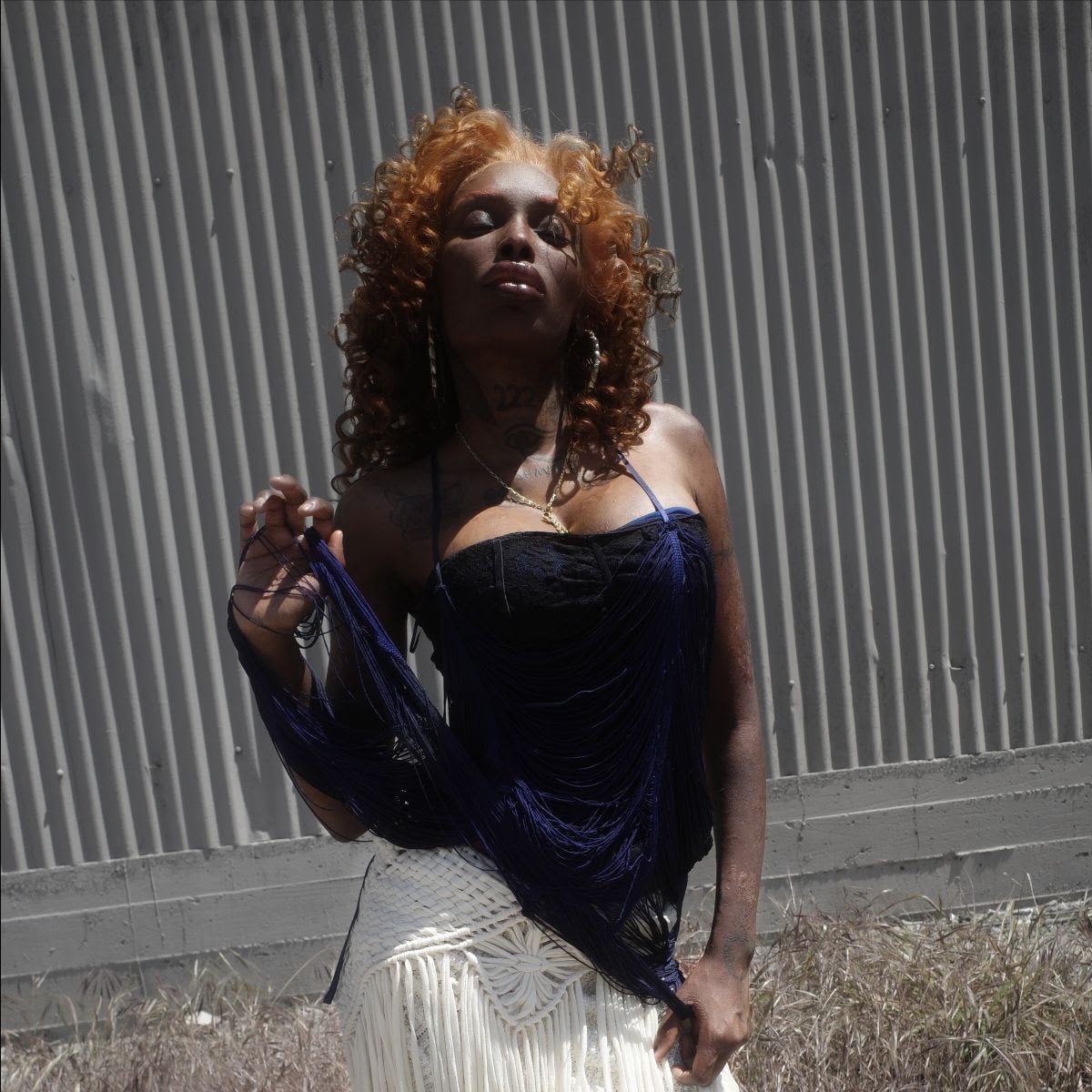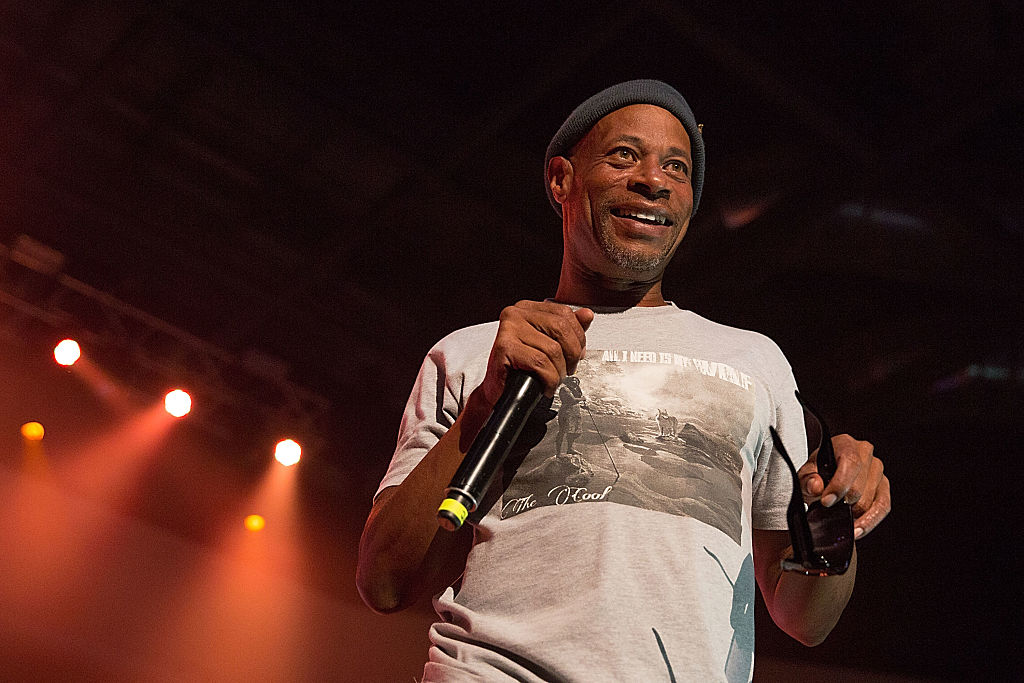Chuquimamani-Condori (aka DJ E). Photo courtesy of UNSOUND.
DJ E shocked the world last year. Self-released without external promotion, E Crampton Chuquimia’s de facto debut as Chuquimamani-Condori spread by digital word of mouth, quickly taking over a corner of the internet patrolled by experimental music obsessives.
The 38-year-old Pakajaqueño Aymara artist born in California’s Inland Empire has gone by at least half a dozen names since they started making music roughly 20 years ago. Each new alias is more reinvention than evolution, adding thread to an ever-thickening tapestry. Today, the alter egos DJ E and Chuquimamani-Condori represent complementary halves of an artistic whole.
E’s newest album is a cascade of stylistic collisions resulting in a massive, multi-genre pileup. DJ tags and stock sound effects — a sword drawn here, skidding tires there, an exploding pipeline elsewhere — are stacked atop warped folk melodies (sung by sunken voices or blown through clipping siku panpipes) and the staggered triple rhythms of huayno, an Andean music and dance style that incorporates both pre- and post-colonial elements.
It’s just as dense thematically, incorporating the subtextual strands of Latin American queer theory and ancestral Aymara concepts that have run through E’s work — first as E+E, then as Elysia Crampton, and now as Chquimamani-Condori/DJ E. “This is the sound of our water ceremonies, the 40 bands playing their melodies at once to recreate the cacophony of the first aurora & the call of the morning star Venus,” they wrote on Instagram in the project’s only official announcement.
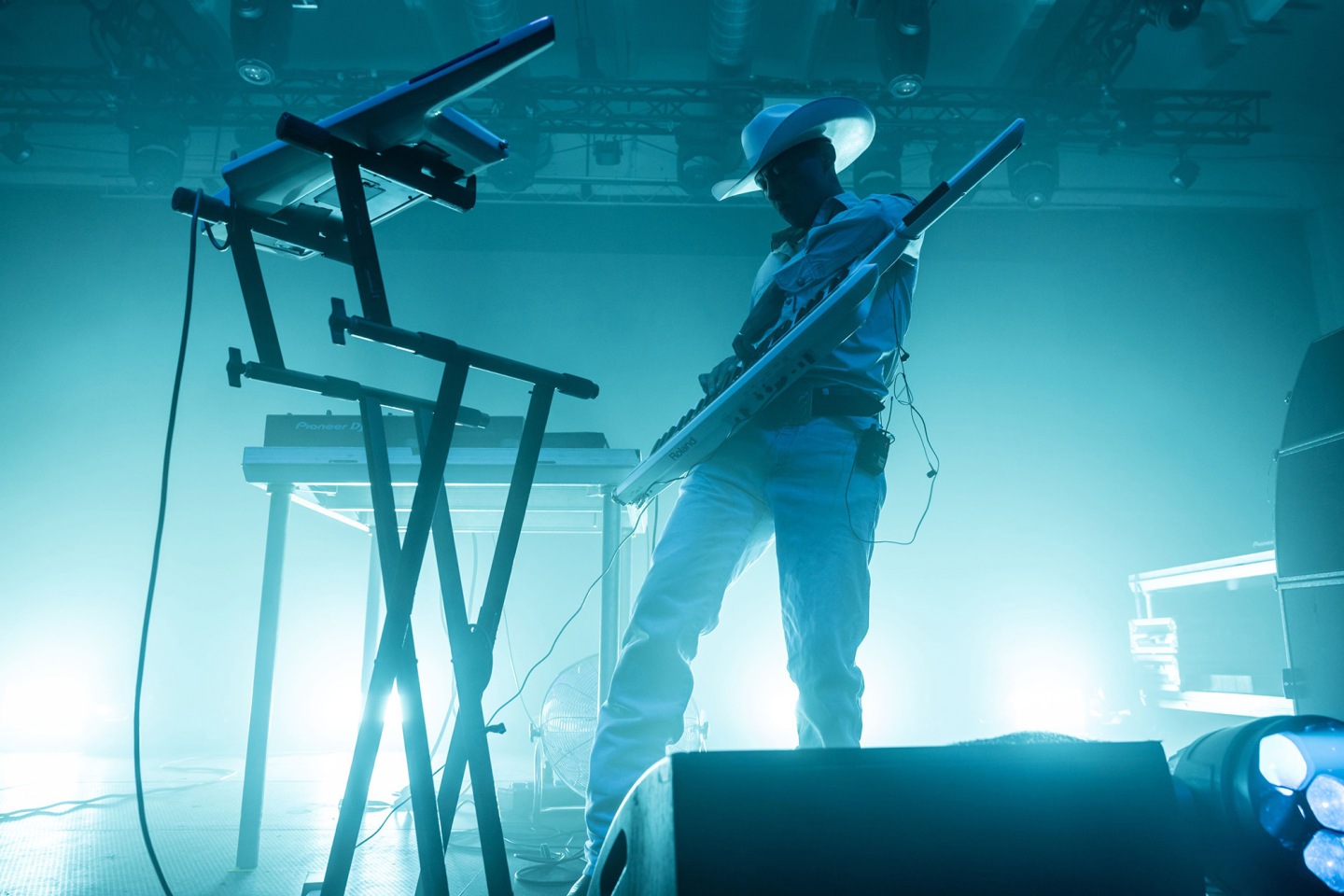
Chuquimamani-Condori performs at Kamienna 12 in Krakow, Poland. Photo by Zuza Sosnowska, courtesy of UNSOUND.
While E’s artistic innovations have been heralded as genius since the mid 2010s, less attention has been paid to their work as an actual DJ. At Krakow, Poland’s NOISE-themed UNSOUND festival last week, they showed both sides of their artistry.
Their main billing was a dazzling, but brief, live “intervention,” performed for a massive crowd on Thursday, the first of the festival’s three “club” nights. The night before, however, they stood behind the decks for a much longer set at a much more intimate venue. In this small room, bathed in colorful light and fog, wearing an off-white cowboy hat and a burnt-orange Travis Air Force Base hoodie, E looked loose and locked in as they spun far-flung source material into songs that sounded snatched from thin air.
They began the show in album mode, building on a bedrock of the galloping huayno beats their fans have grown to know and love. The rhythm was relatively steady for the set’s first half, though sometimes stunted by the same kind of explosive abbreviations that feature heavily on the record. Above it, melodic and harmonic elements clashed in a melee that spiraled further out of control as the minutes jogged on. The intensity grew with each new layer, as if a dozen competing radio stations had gone rogue and joined forces on a mission to scramble their signals beyond human interpretation.
It’s important to note that, despite their commitment to rebelling against Western popular music’s oppressive norms, E’s UNSOUND DJ set never felt esoteric. Timbres and tempos changed regularly, but the pulse remained danceable for anyone genuinely invested in dancing; doing so only required the ability to move where the music went, taking the inevitable moments of incongruence between the rhythms of the feet and drums in stride.
Earning the audience’s trust in this way liberated E to mix virtually any element they wanted into the groove, conditioning the crowd to the music’s endless friction. Into this juxtaposition game entered YMO-style electric keyboards playing upbeat major pentatonics, detuned steel drums, drowning vocal lines, chugging acoustic bass, eardrum-shattering static, and countless other unexpected arrivals.
A climactic moment came halfway through the performance with the introduction of Los Kjarkas’ “Llorando se fue” — perhaps the only certified huayno crossover hit, repopularized in the North American millennial mainstream through its interpolation in Jennifer Lopez and Pitbull’s 2011 track “On The Floor.” Using the full song, not just its irresistible core refrain, E honored its transcendence by guiding it to parts unknown and letting it soar above their teeming production.
Then they pulled their best party trick of the night, moving into a standard, unvarnished 4/4 meter that sounded completely alien after half an hour of insistent triplets. Capitalizing on the disorientation, they took their experiments even further, dropping record scratches and shouts of “DJ!” indiscriminately. A passage would start off sounding like classic house before transforming into a strangled ballad that morphed into a wildly modulating Auto-Tune choir piece. The original groove was back by the end, setting up a quick, triumphant finale that brought the beat to a boil, its drums squelching like a million popped frogs.
E’s skill as a DJ isn’t exactly a secret. In the past, they’ve met the world as DJ K’oa and Ocelote DJ, and, with their brother Joshua — who released an excellent minimalist guitar album of his own this year — as Los Thuthanaka. Each project is its own original entity, but they all serve as proof of E’s ability to curate sounds and signifiers into a unified, unmistakable aesthetic.
Perhaps the best illustration of the continuity flowing through their work as a recording artist and DJ is “Bethlehem,” a 45-minute mix released with Fact Magazine a few weeks after DJ E dropped. The mix begins with an impossibly good mashup of that record’s closer “Until I Find You Again” and Tracy Chapman’s “Smoke and Ashes,” and ends with The Beach Boys’ “Morning Christmas,” touched lightly but impactfully by a sinister drone. Between these bookends are other pieces — some original, some her brothers’, a few borrowed from others, each pushing to a new stage of enlightenment.

